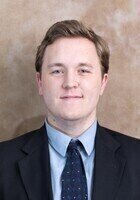All AP Biology Resources
Example Questions
Example Question #475 : Cellular Biology
The body constantly secretes saliva into the mouth. Muscular contractions eliminate the accumulated saliva by passing it down the throat and into the stomach. Even when an acrobat is hanging upside down, their body is able to counter-act gravity and move the saliva toward the stomach.
Which of the three muscle types controls the muscles in your throat involved in swallowing?
Smooth muscle and skeletal muscle
Skeletal muscle
Neither smooth muscle, nor skeletal muscle
Smooth muscle
Smooth muscle and skeletal muscle
Swallowing involves both skeletal muscle and smooth muscle. While skeletal muscle is voluntary (somatic), smooth muscle is involuntary (autonomic). Swallowing involves both of these systems. One can voluntarily induce swallowing, but will also swallow involuntarily, such as while sleeping.
Most of the muscles in the esophagus are smooth muscle; these will be the muscles largely responsible for counter-acting gravity in the example. The upper region of the esophagus (the pharynx) and the tongue are composed of skeletal muscle, allowing us to induce the swallowing motion voluntarily.
Example Question #476 : Cellular Biology
What is the functional unit of a muscle cell?
Sarcoplasm
Sarcolemma
Sarcomere
Endomysium
Muscle belly
Sarcomere
A muscle consists of millions of tiny subunits called sarcomeres. This is the functional unit of the muscle cell responsible for shortening and causing contractile force. Sarcomeres combine to form myofibrils, which form together to become a single muscle fiber, or muscle cell. Multiple muscle fibers form a muscle belly, the macrostructure of the muscle.
Example Question #477 : Cellular Biology
What is the scientific term for a muscle cell?
Melanocyte
Sarcomere
Astrocyte
Acanthocyte
Myocyte
Myocyte
Muscle cells are called myocytes. "Myo" is a prefix for anything related to muscles. Terms such as myoblasts and myogenesis are related to muscle cells. "Cyte" means cell, and therefore "myo" and "cyte" means "muscle cell."
Melanocytes are found in the skin, and are responsible for producing the pigment melanin. Astrocytes are glial cells in the nervous system that create the blood-brain barrier. Acanthocytes are abnormal red blood cells that have become damaged, resulting in a change in their appearance.
Sarcomeres are not cells; they are a structure found in myocytes. Sarcomeres are composed of actin and myosin filaments, and are the fundamental contractile unit of the muscle fiber.
Example Question #478 : Cellular Biology
Calcium ions are necessary for the formation of cross-bridges between the myosin head of the thick filament and the actin subunits of the thin filament. In order to end cross-bridge cycling calcium ions must follow which of the listed processes?
Return to the sarcoplasmic reticulum via active transport
Return to the blood via ribosomal transport
Return to the sarcoplasmic reticulum via ribosomal transport
Return to the extracellular space via active transport
Return to the sarcoplasmic reticulum via active transport
Calcium ions facilitate the translocation of the troponin-tropomyosin complex, which inhibits cross-bridge formation between the myosin head (thick filament) and actin (thin filament). In order to inhibit muscle contraction, the troponin-tropomyosin must slide back into its original position, thereby inhibiting physical and chemical contact between the thick and thin filaments. In order to accomplish this, the calcium ions must be actively pumped out of the cytoplasm and into the sarcoplasmic reticulum (SR). It is important to remember that in a muscle fiber, the SR acts as a reservoir to store calcium ions. In order for them to be stored in a concentration greater than that in the cytoplasm, active transport must be involved to pump the ions against their gradient.
Example Question #479 : Cellular Biology
What ultimately allows muscle contraction to occur?
Release of calcium ions from the sarcoplasmic reticulum
Hydrolysis of ATP by actin
Hydrolysis of GTP
Degradation of troponin
Release of calcium ions from the sarcoplasmic reticulum
In order for muscle contraction to occur, myosin binding sites must be exposed on actin filaments. This is accomplished by releasing calcium ions from the sarcoplasmic reticulum. Calcium interacts with troponin, which in turn allows the myosin binding site to be exposed via interaction with tropomyosin. Troponin is not degraded during this process, only used to move tropomyosin out of the way. Myosin can then bind actin, hydrolyze ATP, and begin contraction.
GTP is not involved in the process and actin does not have an ATPase function.
Example Question #40 : Types Of Cells And Tissues
Which of the following correctly describes the contraction of a muscle?
ATP is released from myosin when the sarcomere shortens
Calcium is a cofactor that allows myosin to bind ATP
Glucose must be present in the cytosol during muscle contraction
If ATP is present in the muscle cell, then it is always able to contract
ADP is bound to myosin when the sarcomere shortens
ADP is bound to myosin when the sarcomere shortens
There are two compounds that are absolutely necessary for muscle contraction: ATP and calcium ions. Calcium ions bind to troponin, which removes tropomyosin from the binding site on actin. Only after this change occurs can myosin bind to actin and cause a contraction. ATP is hydrolyzed to alter myosin into a high energy state. This energy is released during the muscle contraction when myosin binds to actin. Even if ATP is present, the contraction cannot occur without calcium, and even if calcium is present it cannot occur without ATP.
During the contraction cycle, ATP binds to myosin in its low-energy state. ATP is converted to ADP, and the resulting energy is stored in the myosin head. The myosin then binds to actin, still carrying the ADP, and uses the energy to transition back to the low-energy state by pulling actin and shortening the sarcomere. This causes the ADP to be released from myosin. The binding of a new ATP to the myosin allows it to release actin, and the cycle begins again.
Example Question #541 : Ap Biology
Which of the following occurs in a sarcomere during muscle contraction?
The thick filaments move closer to one another
All of these occur during muscle contraction
The Z lines get closer to each other
The A band shortens
The I band retains its length
The Z lines get closer to each other
During muscle contraction thick filaments (myosin) remain stationary, while thin filaments (actin) move towards one another. In the process, the H zone and I band shorten, as the Z lines get closer together. The A band, however, never changes in length.
Example Question #542 : Ap Biology
You observe a muscle cell that is not multinucleated. What type of muscle cell can it be?
Skeletal muscle
Skeletal muscle or cardiac muscle
Smooth muscle or skeletal muscle
Cardiac muscle
Cardiac muscle or smooth muscle
Cardiac muscle or smooth muscle
There are three primary types of muscle: skeletal, smooth, and cardiac.
Skeletal muscle is multinucleated and striated. Smooth muscle is mononucleated and not striated. Cardiac muscle is mononucleated and striated. If we know that the muscle type is not multinucleated, then it must be mononucleated and could be either smooth muscle or cardiac muscle.
Example Question #483 : Cellular Biology
Which of the following events will occur first during the initiation of a muscle contraction?
Motor neurons release acetylcholine
Calcium ions bind to troponin
T-tubules close, resulting in activation of the Ca2+ ATPase pump
Calcium is released from the sarcoplasmic reticulum
Motor neurons release acetylcholine
There are seven steps involved in the signaling cascade from the initiation of contraction to the subsquent relaxation of muscle fibers.
- Motor neurons release acetylcholine (ACh), which binds to receptors on the muscle fiber's cell membrane.
- ACh receptor binding and activation creates an action potential that propagates along the muscle fiber membrane and down T tubules.
- The action potential triggers the release of Ca2+ ions from the sarcoplasmic reticulum.
- The released Ca2+ ions bind to troponin, which causes the displacement of tropomyosin, revealing the myosin-binding sites on the actin filament.
- Myosin cross-bridges attach to actin at exposed binding sites and enter a cycle of shifts to crawl along the actin fiber. This causes the sarcomere to shorten. ATP is required for this reaction.
- Cytosolic Ca2+ ions are removed and brought back into the sarcoplasmic reticulum by active transport (by a Ca2+ ATPase pump).
- Tropomyosin blockage of myosin-binding sites is restored by Ca2+ ion removal). Contraction ends and the muscle fiber relaxes.
Example Question #543 : Ap Biology
Which two major proteins are involved in the contraction of skeletal muscle?
Actin and myosin
Actin and ATP
Myosin and ATP
Titin and actin
Actin and myosin
The contraction of muscle cells results from the controlled interaction between actin and myosin proteins.
Actin forms a thin filament coil structure comprised to two strands of actin and some additional regulatory proteins (troponin and tropomyosin). The actin coils are arranged above and below myosin bundles, which are also called thick filaments. One end of myosin forms a globular head shape that, in a relaxed state, is not able to bind to a site on actin. When the muscle is stimulated by a motor neuron, a signal cascade results in a conformational change that allows the myosin head to bind to actin and shift positions, allowing the muscle to shorten and contract.
While ATP is an essential component in the biochemistry of muscle contraction, it is not actually a protein. ATP is, instead, considered an amino acid derivative. Titin is the elastic protein that connects the ends of a sarcomere and allows the muscle to recoil when over-stretched.
Certified Tutor
All AP Biology Resources




